Rui Ribeiro
Speaker Fuzzy Fingerprints: Benchmarking Text-Based Identification in Multiparty Dialogues
Apr 21, 2025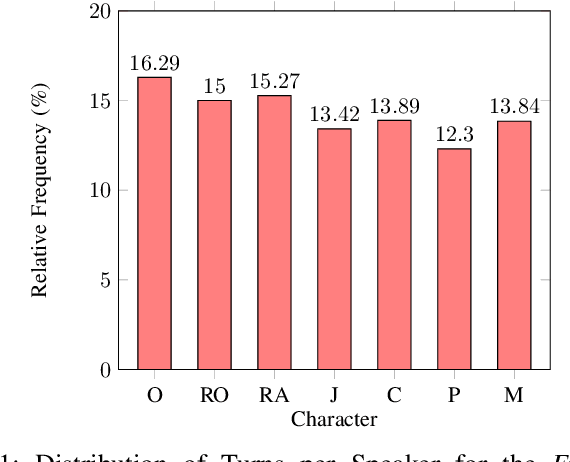
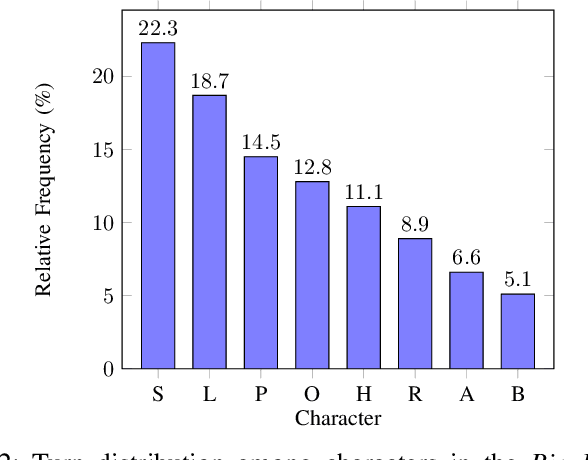
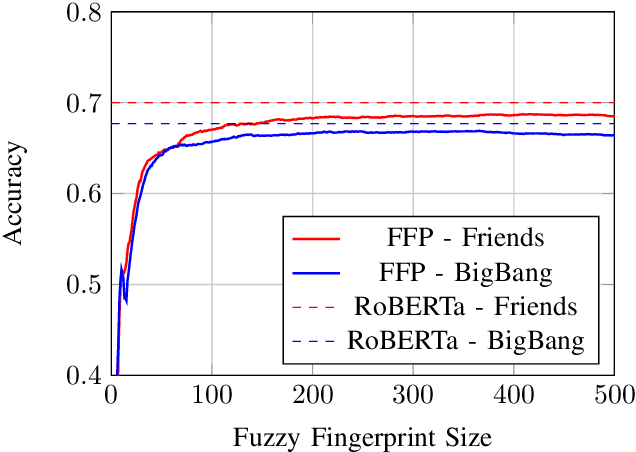
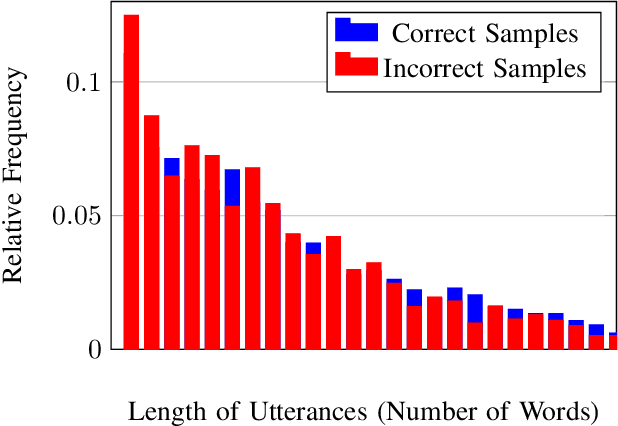
Abstract:Speaker identification using voice recordings leverages unique acoustic features, but this approach fails when only textual data is available. Few approaches have attempted to tackle the problem of identifying speakers solely from text, and the existing ones have primarily relied on traditional methods. In this work, we explore the use of fuzzy fingerprints from large pre-trained models to improve text-based speaker identification. We integrate speaker-specific tokens and context-aware modeling, demonstrating that conversational context significantly boosts accuracy, reaching 70.6% on the Friends dataset and 67.7% on the Big Bang Theory dataset. Additionally, we show that fuzzy fingerprints can approximate full fine-tuning performance with fewer hidden units, offering improved interpretability. Finally, we analyze ambiguous utterances and propose a mechanism to detect speaker-agnostic lines. Our findings highlight key challenges and provide insights for future improvements in text-based speaker identification.
From Brazilian Portuguese to European Portuguese
Aug 14, 2024Abstract:Brazilian Portuguese and European Portuguese are two varieties of the same language and, despite their close similarities, they exhibit several differences. However, there is a significant disproportion in the availability of resources between the two variants, with Brazilian Portuguese having more abundant resources. This inequity can impact the quality of translation services accessible to European Portuguese speakers. To address this issue, we propose the development of a Brazilian Portuguese to European Portuguese translation system, leveraging recent advancements in neural architectures and models. To evaluate the performance of such systems, we manually curated a gold test set comprising 500 sentences across five different topics. Each sentence in the gold test set has two distinct references, facilitating a straightforward evaluation of future translation models. We experimented with various models by fine-tuning existing Large Language Models using parallel data extracted from movie subtitles and TED Talks transcripts in both Brazilian and European Portuguese. Our evaluation involved the use of conventional automatic metrics as well as a human evaluation. In addition, all models were compared against ChatGPT 3.5 Turbo, which currently yields the best results.
Fuzzy Fingerprinting Transformer Language-Models for Emotion Recognition in Conversations
Sep 08, 2023Abstract:Fuzzy Fingerprints have been successfully used as an interpretable text classification technique, but, like most other techniques, have been largely surpassed in performance by Large Pre-trained Language Models, such as BERT or RoBERTa. These models deliver state-of-the-art results in several Natural Language Processing tasks, namely Emotion Recognition in Conversations (ERC), but suffer from the lack of interpretability and explainability. In this paper, we propose to combine the two approaches to perform ERC, as a means to obtain simpler and more interpretable Large Language Models-based classifiers. We propose to feed the utterances and their previous conversational turns to a pre-trained RoBERTa, obtaining contextual embedding utterance representations, that are then supplied to an adapted Fuzzy Fingerprint classification module. We validate our approach on the widely used DailyDialog ERC benchmark dataset, in which we obtain state-of-the-art level results using a much lighter model.
PGTask: Introducing the Task of Profile Generation from Dialogues
Apr 13, 2023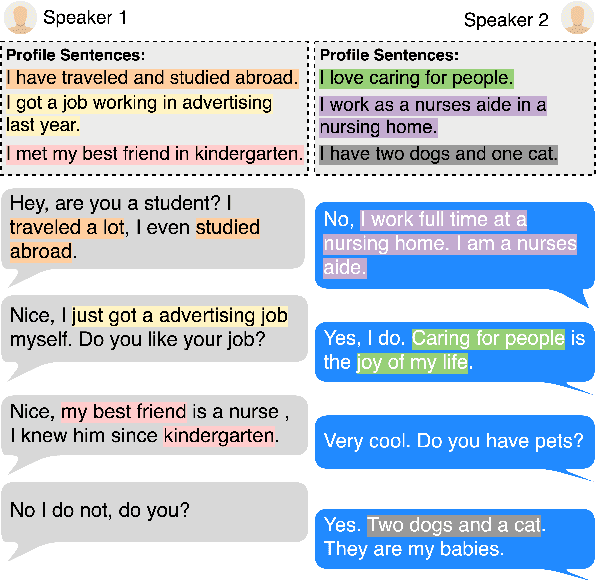

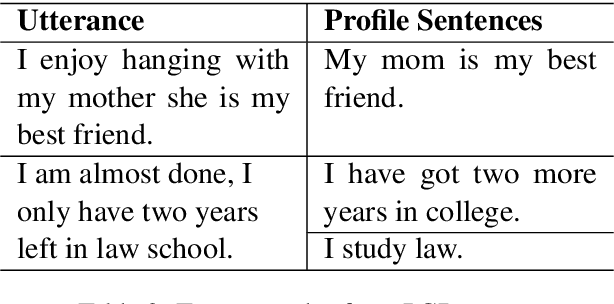
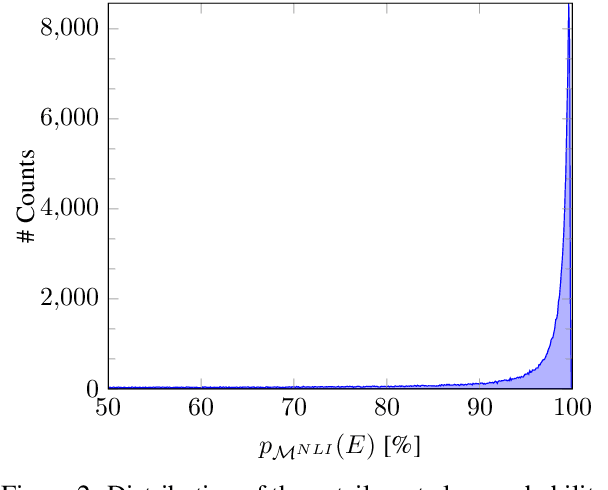
Abstract:Recent approaches have attempted to personalize dialogue systems by leveraging profile information into models. However, this knowledge is scarce and difficult to obtain, which makes the extraction/generation of profile information from dialogues a fundamental asset. To surpass this limitation, we introduce the Profile Generation Task (PGTask). We contribute with a new dataset for this problem, comprising profile sentences aligned with related utterances, extracted from a corpus of dialogues. Furthermore, using state-of-the-art methods, we provide a benchmark for profile generation on this novel dataset. Our experiments disclose the challenges of profile generation, and we hope that this introduces a new research direction.
BLOOM: A 176B-Parameter Open-Access Multilingual Language Model
Nov 09, 2022Abstract:Large language models (LLMs) have been shown to be able to perform new tasks based on a few demonstrations or natural language instructions. While these capabilities have led to widespread adoption, most LLMs are developed by resource-rich organizations and are frequently kept from the public. As a step towards democratizing this powerful technology, we present BLOOM, a 176B-parameter open-access language model designed and built thanks to a collaboration of hundreds of researchers. BLOOM is a decoder-only Transformer language model that was trained on the ROOTS corpus, a dataset comprising hundreds of sources in 46 natural and 13 programming languages (59 in total). We find that BLOOM achieves competitive performance on a wide variety of benchmarks, with stronger results after undergoing multitask prompted finetuning. To facilitate future research and applications using LLMs, we publicly release our models and code under the Responsible AI License.
SUMBot: Summarizing Context in Open-Domain Dialogue Systems
Oct 12, 2022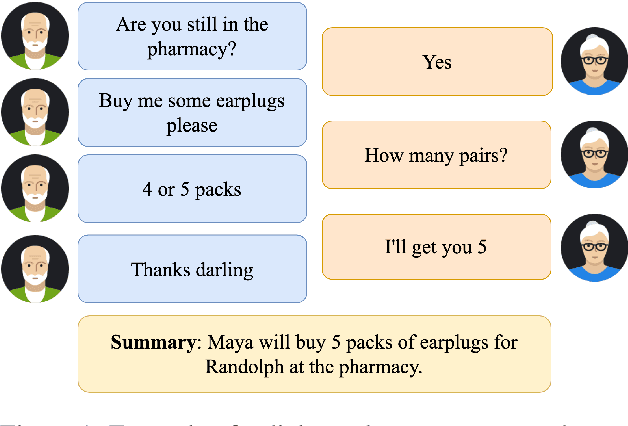
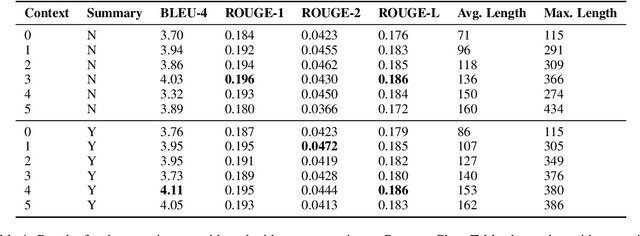
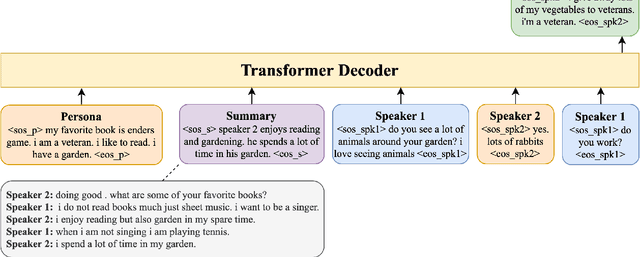
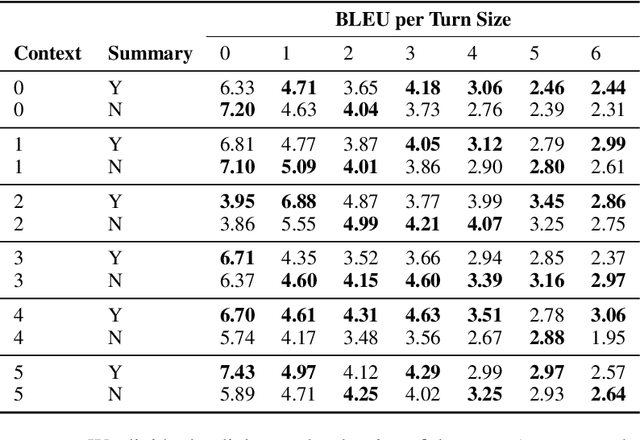
Abstract:In this paper, we investigate the problem of including relevant information as context in open-domain dialogue systems. Most models struggle to identify and incorporate important knowledge from dialogues and simply use the entire turns as context, which increases the size of the input fed to the model with unnecessary information. Additionally, due to the input size limitation of a few hundred tokens of large pre-trained models, regions of the history are not included and informative parts from the dialogue may be omitted. In order to surpass this problem, we introduce a simple method that substitutes part of the context with a summary instead of the whole history, which increases the ability of models to keep track of all the previous relevant information. We show that the inclusion of a summary may improve the answer generation task and discuss some examples to further understand the system's weaknesses.
Question rewriting? Assessing its importance for conversational question answering
Jan 22, 2022
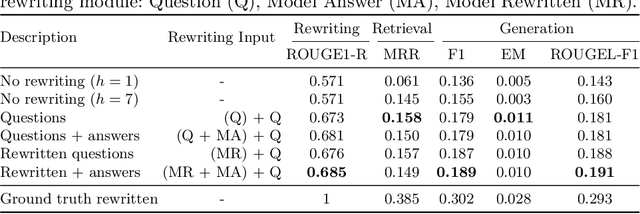
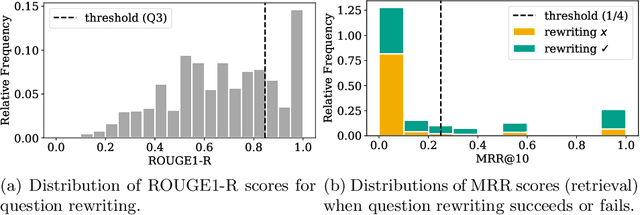
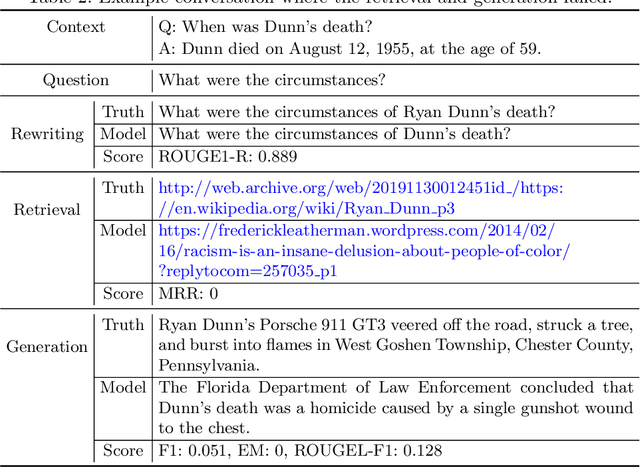
Abstract:In conversational question answering, systems must correctly interpret the interconnected interactions and generate knowledgeable answers, which may require the retrieval of relevant information from a background repository. Recent approaches to this problem leverage neural language models, although different alternatives can be considered in terms of modules for (a) representing user questions in context, (b) retrieving the relevant background information, and (c) generating the answer. This work presents a conversational question answering system designed specifically for the Search-Oriented Conversational AI (SCAI) shared task, and reports on a detailed analysis of its question rewriting module. In particular, we considered different variations of the question rewriting module to evaluate the influence on the subsequent components, and performed a careful analysis of the results obtained with the best system configuration. Our system achieved the best performance in the shared task and our analysis emphasizes the importance of the conversation context representation for the overall system performance.
Domain Adaptation in Dialogue Systems using Transfer and Meta-Learning
Feb 22, 2021

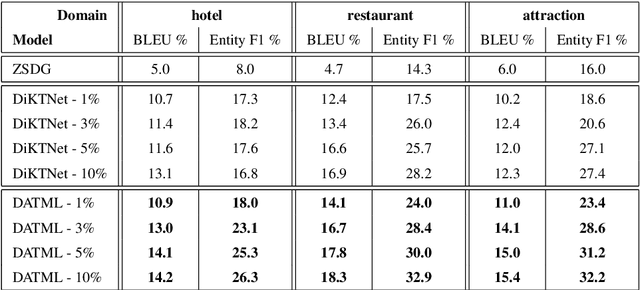

Abstract:Current generative-based dialogue systems are data-hungry and fail to adapt to new unseen domains when only a small amount of target data is available. Additionally, in real-world applications, most domains are underrepresented, so there is a need to create a system capable of generalizing to these domains using minimal data. In this paper, we propose a method that adapts to unseen domains by combining both transfer and meta-learning (DATML). DATML improves the previous state-of-the-art dialogue model, DiKTNet, by introducing a different learning technique: meta-learning. We use Reptile, a first-order optimization-based meta-learning algorithm as our improved training method. We evaluated our model on the MultiWOZ dataset and outperformed DiKTNet in both BLEU and Entity F1 scores when the same amount of data is available.
 Add to Chrome
Add to Chrome Add to Firefox
Add to Firefox Add to Edge
Add to Edge